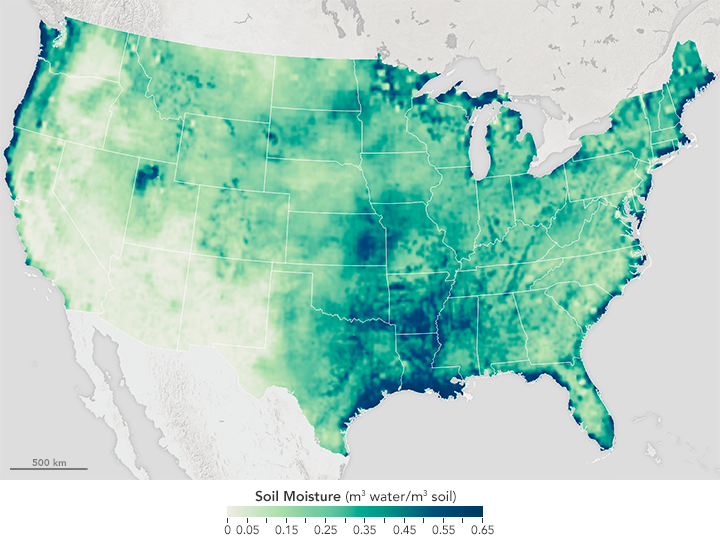Scientists have long known that moisture content in the thin, top layers of soil plays an important role in global water processes. Recent findings published in Nature Geoscience show that roughly 14 percent of all rainfall remains in the uppermost soil layer for as long as three days after a storm. According to data from NASA’s Soil Moisture Active Passive mission (SMAP), that’s especially true for Earth’s driest regions.

Soil moisture varied widely in this image, which uses data gathered between May 27–31, 2015. Image by Joshua Stevens/NASA Earth Observatory.
“It’s sitting at a very critical zone at the surface of the land, and plays a disproportionately critical role in the cycling of water,” said Dara Entekhabi, a professor at MIT and author of the study, in a press release. “It plays a significant role in moderating climate on seasonal and annual timescales.”
The top 2 inches (5 centimeters) of surface soil contains a sort of “memory”—even several days after a heavy rainfall, the soil will contain a fraction of that moisture. Such memory can affect weather, farming, the spread of vector-borne diseases and the length of droughts and floods.
For more on SMAP, check out some of these NASA Earth Observatory stories:
+Soil Moisture in the United States
+Soggy Soil in the Eastern United States



